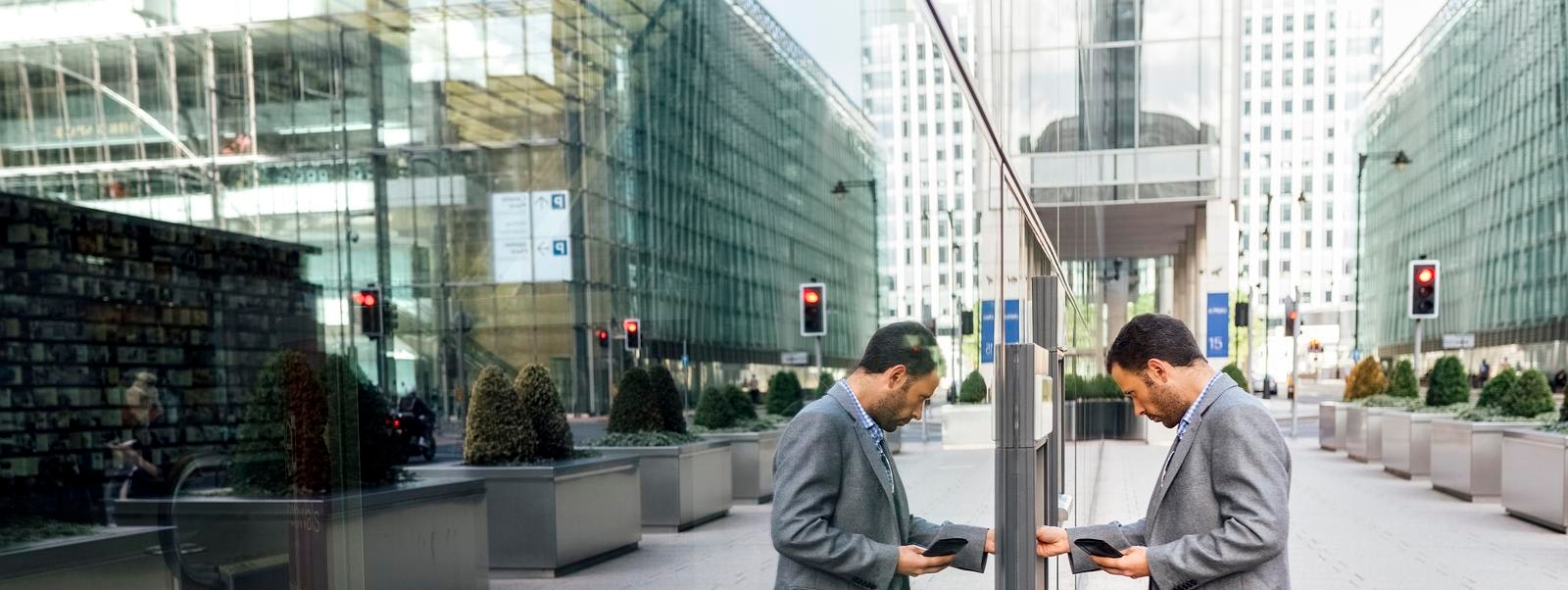By Tim Wyles, Simon Low, and James Bryan
This article was first published on June 4, 2020.
Coronavirus (COVID-19) and the related lockdowns have resulted in a fundamental change in the way consumers interact with the bank. While most governments have continued to allow access to bank branches, the combination of social distancing requirements, lack of commercial activity, and customer hesitancy means that branch usage has reduced dramatically. As a result, many banks have closed branches temporarily. As countries start to emerge into the new normal, banks are questioning which branches they should re-open, particularly given massive cost pressure. Many of our retail banking clients are asking: “How can we use the situation to downsize our branch networks once and for all?”
Careful. While the cost opportunity may be tempting, our view is that far from improving a legacy bank's competitive position, largescale branch closures risk fatally weakening it.
It is true that branches add a level of cost for legacy banks that digital-challenger banks do not have, but branches are also the only real positive differentiator that legacy banks have versus the challengers. Closing branches leaves legacy banks competing head-on with their digital rivals - and, on their own turf, those rivals are hard to beat on customer service, flexibility or cost. No matter however you look at it, 50-year-old patched mainframes lose out to nimble, modern, component-based systems when it comes to offering digital-only banking.
Our advice: Branch networks are like antique family jewels that have been left forgotten in the attic too long – dusty and a little tarnished, but incredibly valuable. Take advantage of the pandemic to fix them up and flaunt them. Do not throw them away.
Why have a bank branch network?
Customer interactions in branches are falling in almost all developed markets. Despite this, customers continue to value the existence of branches. That is why over 98% of customers who switched bank last year in the UK chose to move to a bank with branches. It is not just older people.
In a recent survey, we found that over 95% of UK students also chose a bank with branches. And the in-branch experience matters, the biggest driver of customer satisfaction with their bank in the UK is not the digital experience, nor the overdraft fees. It is the branch experience.
But most bank branches are not fit-for-purpose. This is down to a combination of years of underinvestment and a lack of clarity as to what the branch is for.
There are three broad reasons why customers go to the branch:
1. Forced – you make them
Guess what? Customers do not like being forced to go to the branch. Digital banks do not make their customers go, so why do you? For some interactions there may be a regulatory requirement.
For many, it is simply a lazy internal process which takes advantage of the branch infrastructure. Fixing this means changing some historical processes and being imaginative – or simply looking at how digital banks do it.
More importantly it takes a fundamental change in attitude from “the branch is free – use it” to “the branch is our most valuable real-estate – do not pollute it”.
2. Self-directed – They know what they need and just want to get it
Self-directed interactions cover all the other interactions where the customer knows exactly what they want and just wants it done. This includes transactions like cash-in and bill payment, along with simple product purchases, where the customer does not need help to decide.
The bulk of branch visits are self-directed interactions and most branches are still designed around transactions. But customers are not really looking for human contact in these interactions. The branch is just the simplest option. For example, cash-in transactions are the number one counter transaction in Spain and have proved the hardest transaction to shift.
Cash-in is dominated by small businesses – most of whom would love a more convenient alternative. The challenge is to come up with something easier than handling a bundle of cash to a teller and watching them count it.
3. Support – They need help or advice
In the third type of interaction, customers are looking for human contact. This is when they need help or advice. Maybe they are first-time home buyers, trying to understand mortgages, maybe they are a recently bereaved spouse, trying to sort out their lost-one’s accounts, maybe they simply do not understand some charges on their credit card.
Humans have one inherent competitive advantage over machines. They share feelings. And when customers need support, they generally look for empathy. This is where the branch can shine - the problem is, most branches are not set up to focus on empathy.
We see a happy future for the branch network. But this is mostly around providing empathy and support rather than forced or self-service interactions - and COVID-19 helps you get there.
How COVID-19 helps with bank branches
The pandemic provides the imperative to address the branch network, given the overwhelming pressure on costs. But it also gives the opportunity to fix the network, given the combination of worker and customer safety, social distancing rules, the forced change in customer behavior, and the lower levels of business currently that give you breathing space to transform the organisation. Taking each type of interaction in turn:
Forced – There is clear pressure both for banks and regulators to reduce the need for customers to go to the branch if they do not want to. Embrace it and address every process that currently requires it.
Self-directed – Stop trying to migrate transactions to alternative channels and start addressing underlying drivers. The two biggest reasons that customers transact in the branch are cash-in transactions and bill-pay. COVID-19 helps with both of these.
To reduce cash-in in the branch, don’t try to design a smarter cash-in machine. Simply reduce use of cash. While the technophiles will promote digital/cellphone-based payments, an easier first step is simply to promote contactless card payments both among consumers and small businesses. Many stores already insist on card payment due to the pandemic. Many customers who used to use cash have switched – including older customers who are increasingly encouraged to buy basic necessities online. Your challenge is to stop the switch back to cash as we emerge into the new normal. This is a much easier challenge.
For bill-pay, the approach is similar. Most customers who pay bills manually do so because they are concerned either that they do not have sufficient funds or that the utility makes an error. Both of these concerns have simple solutions already in-place in different markets – and customers are currently willing to change their behavior as part of the COVID-19 response, particularly given branch service levels during the crisis.
Support – By restricting branch traffic primarily to customers who need support, you can afford to focus on giving the best, most empathetic, help/advice possible. Remember – this is where your branch wins versus digital.
In the longer term, you will need to change physical layouts and staff profiles to reflect lower footfall and the more complex, personal interactions. In the short-term, you should start with refocusing existing staff and redesigning the branch management model.
Again, the break with the old normal forced by COVID-19 helps drive change whether it is introducing “by-appointment” as the new standard or retooling staff to help customers navigating the financial aftermath of the crisis.
As an important note, we are not suggesting that the branch acts as the only source of customer support. Branches should continue to be complemented by telephone, video and chat-based concierge services for basic support.
For more complex financial transactions, branch staff will need the support of remote subject-matter experts, while some customers will choose to access the remote advisors directly. The branch is simply one way customers can interact, with a primary focus on interactions requiring empathy in a face-to-face context.
The end game
Once you have refocused your branch model on support, then you can reprofile the network.
First, you absolutely will not need so many outlets; customers are willing to travel further for support than for either forced or self-directed interactions. Second, you do not need to support the same footfall in the branches you keep, so you can probably reduce the size of branches, subject to longer-term norms in social distancing. Third, you no longer need to be on the high-street presence; think lawyers office. Finally, if you have reduced cash to a minimum, you can strip out layers of security, reducing the cost of physical distribution further.







